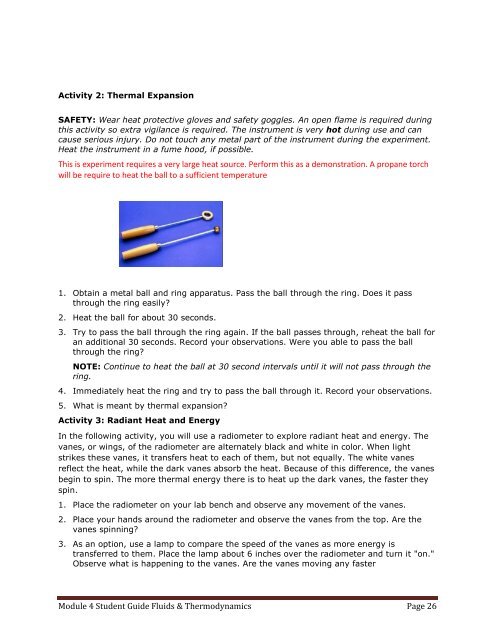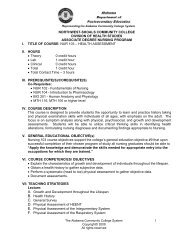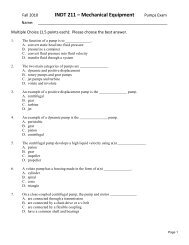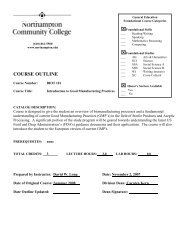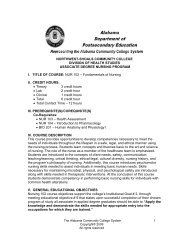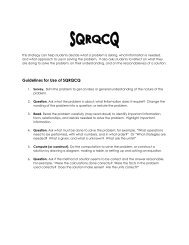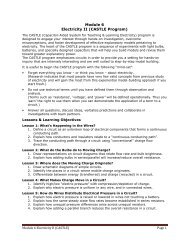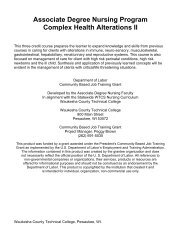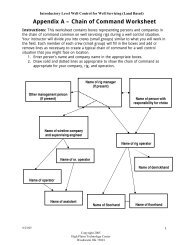i. Module 4 Fluids and Thermodynamics ... - Workforce 3 One
i. Module 4 Fluids and Thermodynamics ... - Workforce 3 One
i. Module 4 Fluids and Thermodynamics ... - Workforce 3 One
Create successful ePaper yourself
Turn your PDF publications into a flip-book with our unique Google optimized e-Paper software.
Activity 2: Thermal ExpansionSAFETY: Wear heat protective gloves <strong>and</strong> safety goggles. An open flame is required duringthis activity so extra vigilance is required. The instrument is very hot during use <strong>and</strong> cancause serious injury. Do not touch any metal part of the instrument during the experiment.Heat the instrument in a fume hood, if possible.This is experiment requires a very large heat source. Perform this as a demonstration. A propane torchwill be require to heat the ball to a sufficient temperature1. Obtain a metal ball <strong>and</strong> ring apparatus. Pass the ball through the ring. Does it passthrough the ring easily?2. Heat the ball for about 30 seconds.3. Try to pass the ball through the ring again. If the ball passes through, reheat the ball foran additional 30 seconds. Record your observations. Were you able to pass the ballthrough the ring?NOTE: Continue to heat the ball at 30 second intervals until it will not pass through thering.4. Immediately heat the ring <strong>and</strong> try to pass the ball through it. Record your observations.5. What is meant by thermal expansion?Activity 3: Radiant Heat <strong>and</strong> EnergyIn the following activity, you will use a radiometer to explore radiant heat <strong>and</strong> energy. Thevanes, or wings, of the radiometer are alternately black <strong>and</strong> white in color. When lightstrikes these vanes, it transfers heat to each of them, but not equally. The white vanesreflect the heat, while the dark vanes absorb the heat. Because of this difference, the vanesbegin to spin. The more thermal energy there is to heat up the dark vanes, the faster theyspin.1. Place the radiometer on your lab bench <strong>and</strong> observe any movement of the vanes.2. Place your h<strong>and</strong>s around the radiometer <strong>and</strong> observe the vanes from the top. Are thevanes spinning?3. As an option, use a lamp to compare the speed of the vanes as more energy istransferred to them. Place the lamp about 6 inches over the radiometer <strong>and</strong> turn it "on."Observe what is happening to the vanes. Are the vanes moving any faster<strong>Module</strong> 4 Student Guide <strong>Fluids</strong> & <strong>Thermodynamics</strong> Page 26


